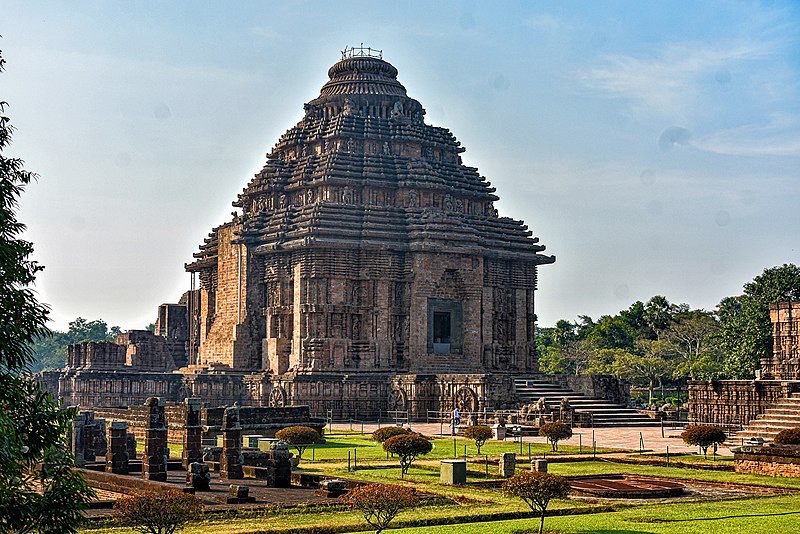CONTENTS
- National Legal Services Day
- Konark Sun Temple
National Legal Services Day
Context:
The National Legal Services Day (NLSD) is celebrated on 9th November every year to spread awareness for ensuring reasonable fair and justice procedure for all citizens.
Relevance:
GS II- Polity
About National Legal Services Day:
- NLSD was first started by the Supreme Court of India in 1995 to provide help and support to poor and weaker sections of the society.
- Free legal services are provided in matters before Civil, Criminal and Revenue Courts, Tribunals or any other authority exercising judicial or quasi judicial functions.
- It is observed to make the citizens of the country aware of the various provisions under the Legal Services Authorities Act and the rights of the litigants. On this day, each jurisdiction organizes legal aid camps, Lok adalats, and legal aid programmes.
Objectives of Legal Services Authorities:
- Provide free legal aid and advice.
- Spread legal awareness.
- Organise lok adalats.
- Promote settlements of disputes through Alternative Dispute Resolution (ADR) Mechanisms. Various kinds of ADR mechanisms are Arbitration, Conciliation, Judicial settlement including settlement through Lok Adalat, or Mediation.
- Provide compensation to victims of crime.
Legal Services Institutions for providing Free Legal Services:
National Level:
National Legal Services Authority (NALSA). It was constituted under the Legal Services Authorities Act, 1987. The Chief Justice of India is the Patron-in-Chief.
State Level:
State Legal Services Authority. It is headed by the Chief Justice of the State High Court who is its Patron-in-Chief.
District Level
District Legal Services Authority. The District Judge of the District is its ex-officio Chairman.
Persons Eligible for Getting Free Legal Services:
- Women and children
- Members of SC/ST
- Industrial workmen
- Victims of mass disaster, violence, flood, drought, earthquake, industrial disaster.
- Disabled persons
- Persons in custody
- Those persons who have annual income of less than the amount prescribed by the respective State Government, if the case is before any court other than the Supreme Court, and less than Rs. 5 Lakhs, if the case is before the Supreme Court.
- Victims of Trafficking in Human beings or begar.
Konark Sun Temple
Context:
Recently, four sandstone replicas of the iconic Konark wheels from the Konark Temple have been installed at the Rashtrapati Bhavan’s Cultural Centre and Amrit Udyan. This initiative is among various efforts to incorporate traditional cultural and historical elements into Rashtrapati Bhavan.

Relevance:
GS I: History
Dimensions of the Article:
- Key Facts About Konark Sun Temple
Key Facts About Konark Sun Temple:
Location and Attribution:
- The Konark Sun Temple is a 13th-century CE Sun temple located in Konark, along the coastline in the Puri district of Odisha, India.
- It is attributed to King Narasimhadeva I of the Eastern Ganga dynasty and was built around 1250 CE.
- The temple is dedicated to the Hindu Sun God Surya.
Architectural Marvel:
- The temple complex is renowned for its distinctive appearance, resembling a 100-foot-high chariot with massive stone wheels and horses.
- This architectural masterpiece is carved entirely from stone.
- It is considered the pinnacle of Kalinga temple architecture.
UNESCO World Heritage Site:
- The Konark Sun Temple is a UNESCO World Heritage Site, recognized for its cultural and historical significance.
- It is also a major pilgrimage site for Hindus and is featured on the reverse side of the Indian currency note of 10 rupees.
Colorful Nickname:
- European sailors referred to the temple as the “Black Pagoda” as early as 1676 due to its resemblance to a tiered tower that appeared black. In contrast, the Jagannath Temple in Puri was called the “White Pagoda.”
Key Features:
- The temple symbolizes the chariot of the Sun God, drawn by seven horses and with twelve pairs of wheels, representing the Sun’s movement across the heavens.
- Each wheel has 24 spokes, signifying the 24 hours in a day. These wheels also functioned as sundials, with shadows indicating the time of day.
- The temple complex consists of well-organized spatial units, including the vimana (principal sanctuary), jahamogana (audience hall), and natmandir (dance hall).
- The vimana once had a high tower with a shikhara (crowning cap), known as Rekha deul, which was destroyed in the 19th century.
Architectural Significance:
- The Konark Sun Temple stands as a testament to the architectural and artistic brilliance of the Kalinga dynasty. It combines religious symbolism with astronomical and timekeeping elements, making it a remarkable historical and cultural treasure.




